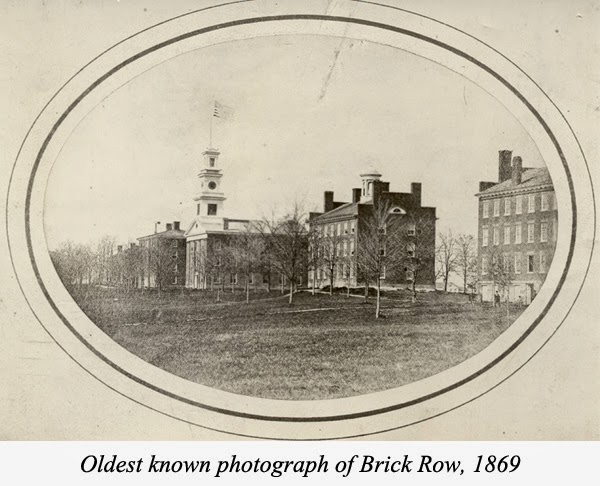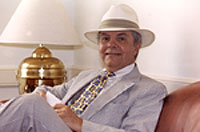A paraphrase of a blog visitor's request:
I came across your name on the internet (WRA: Past & Present), and wondered if you could help me. I live in New South Wales, Australia. I am a distant relative of William Pettingell via his older brother Joseph Pettingell. I have been informed that there was a portrait of William Pettingell in the dining room of Nathan P Seymour House - Campus Guest House, Western Reserve Academy. If this portrait is still hanging in Nathan P Seymour House, is there any way I could get a copy? I would be very grateful if you could reply to my email. I can provide you with a PDF of the diary, if you are interested.
And my subsequent response:
How nice to hear from one of William Pettingell's relatives in Australia, and to know that you contacted us as the result of our blog, WRA: Past & Present.

Yes, we have that portrait of William Pettingell which has been hanging in the dining room of WRA's guest house, the Nathan Seymour House on Prospect Street, since it was opened as a guest house in 1998. I will have that image scanned and sent to you probably later today (Monday).

It may interest you to learn that over the years we have had correspondence with other family members of the Pettingell family. In early 1999 I corresponded with Robert O. Pettingell of Greenville, Texas and sent him a packet of information about William Pettingell (1802-1885) and his association with the old college that was located here in Hudson. Rob then sent me a packet of family information that included the names and addresses of the following, some of whom may be directly related to you. They included Mike Linden of Taupo, New Zealand; Betty Hargreaves of Albion Park Rail, NSW, Australia; Wal Taylor of Muskisson, NSW, Australia; and Mrs. Helen Boyd of Northbridge, NSW, Australia.
A little earlier, my colleague from Case Western Reserve University in Cleveland, Rich Baznik, sent out a large packet of letters from Pettingell to various family members, his wife and others, from 1843 to 1857 that are in the Archives of CWRU or borrowed from private owners with copies in the CWRU Archives. This packet was sent to a Linda Pettingell whose location is unknown to me. Rich also corresponded with Robert O. Pettingell of Texas who was probably sent the same packet of letters, many of them datelined Hudson, Ohio.
Hudson also became the home of William's brother Joseph's grandsons, artist Alfred Pettingell whose nature paintings are in the collection of The Hudson Library and Historical Society where I was library director at the time those paintings were restored. I believe that several are now on exhibit at the library.
Joseph Pettingell, (1879-1964) the other grandson who settled here, kept a diary that tells about Hudson life in the 1880's and 1890's and which was published in a limited edition volume several years ago and is available at the Hudson Library, His widow, Maude S. Pettingell (1880-1980), lived on Oviatt Street for much of her life, and was a special education teacher in Cleveland and Columbus. She and her husband, Joseph, had an extensive shell collection that they donated to the Cleveland Museum of Natural History. Let me know if any of these items would be of interest to you, and I will make copies and send to you via surface mail. For that I will need a street address. Meantime, I will have that portrait scanned and sent along to you.
Yes, we would be interested in seeing the Diary of Joseph Pettingell as transcribed by his grandson, Joseph, and yourself. If you are able to send us the link to the National Library of Australia, we would add this to our records. Thanks again for contacting Western Reserve Academy.
Our connections at WRA are global and so valued.















